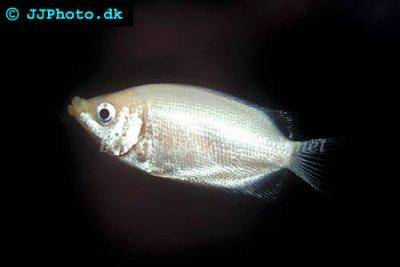Kissing gourami - Helostoma temminckii
Scientific name: Helostoma temminckii
Common name: Kissing gourami
Family: Helostomatidae
Usual size in fish tanks: 20 - 30 cm (7.87 - 11.81 inch)
014
Recommended pH range: 6 - 7.5
Recommended water hardness: 4 - 18°N (71.43 - 321.43ppm)
0°C 32°F30°C 86°F
Recommended temperature range: 23 - 27 °C (73.4 - 80.6°F)
The way how these fish reproduce: Spawning
Where the species comes from: East Asia
Temperament to its own species: aggressive/territorial
Temperament toward other fish species: aggressive/territorial
Usual place in the tank: Top levels
Origin
The Kissing Gourami (Helostoma temminckii) is native to the tropical regions of Southeast Asia. Its natural range extends across several countries, including Thailand, Malaysia, and Indonesia. Within these regions, it inhabits a variety of freshwater environments such as slow-moving rivers, swampy areas, and shallow lakes.
In these habitats, the Kissing Gourami is adapted to the warm, nutrient-rich waters and abundant plant life. The fish’s natural environment provides a wealth of food sources and ample space for its social behaviors, including the characteristic “kissing” interactions.
Due to its adaptability and the varied conditions of its native range, the Kissing Gourami has become a popular species in the aquarium trade, where it is appreciated for its unique appearance and engaging behavior. Efforts to replicate its natural habitat in captivity are essential for maintaining its health and well-being.
Food
The Kissing Gourami is an omnivorous fish with a diverse diet. In its natural habitat, it consumes a mix of plant material and small aquatic creatures, reflecting its adaptable feeding habits. In the aquarium, it's crucial to provide a balanced diet that mimics this variety.
To ensure the Kissing Gourami thrives, offer a combination of high-quality pellets or flakes designed for omnivores. These should include both plant-based ingredients and protein sources. Supplement its diet with occasional live or frozen foods such as bloodworms, brine shrimp, or daphnia to promote optimal health and coloration.
Additionally, provide fresh vegetables like spinach, zucchini, or peas, either blanched or finely chopped, to satisfy its need for plant matter. Regularly rotating food options and maintaining a varied diet will help keep your Kissing Gourami active, healthy, and vibrant.
Sexing
Distinguishing between male and female Kissing Gouramis by appearance alone is quite challenging. Behavioral differences are subtle, with the most noticeable changes occurring during breeding.
Breeding
Unlike other anabantids, the Kissing Gourami does not create a bubble nest. Instead, they are egg scatterers, releasing their eggs freely into the water column during spawning.
Lifespan
Helostoma temminckii can live up to 5 years in a well-maintained aquarium, and with optimal care, they may live even longer.
Short description
Despite their seemingly benign name, Kissing Gouramis often engage in lip-locking behavior that can signify various forms of interaction. This behavior, which might appear affectionate, is actually a complex social signal.
When two male Kissing Gouramis “kiss,” it is generally an act of aggression and dominance during territorial disputes. This behavior allows the fish to assert their presence and establish dominance without escalating to more severe confrontations.
In contrast, when a male and female Kissing Gourami engage in this behavior, it is typically a courtship ritual. During this interaction, the “kissing” serves as a prelude to mating, helping to strengthen the pair bond before breeding. The behavior is a fascinating aspect of their social dynamics, reflecting both their aggressive and courtship behaviors.
Pictures
Images purchased by aqua-fish.net from jjphoto.dk.





